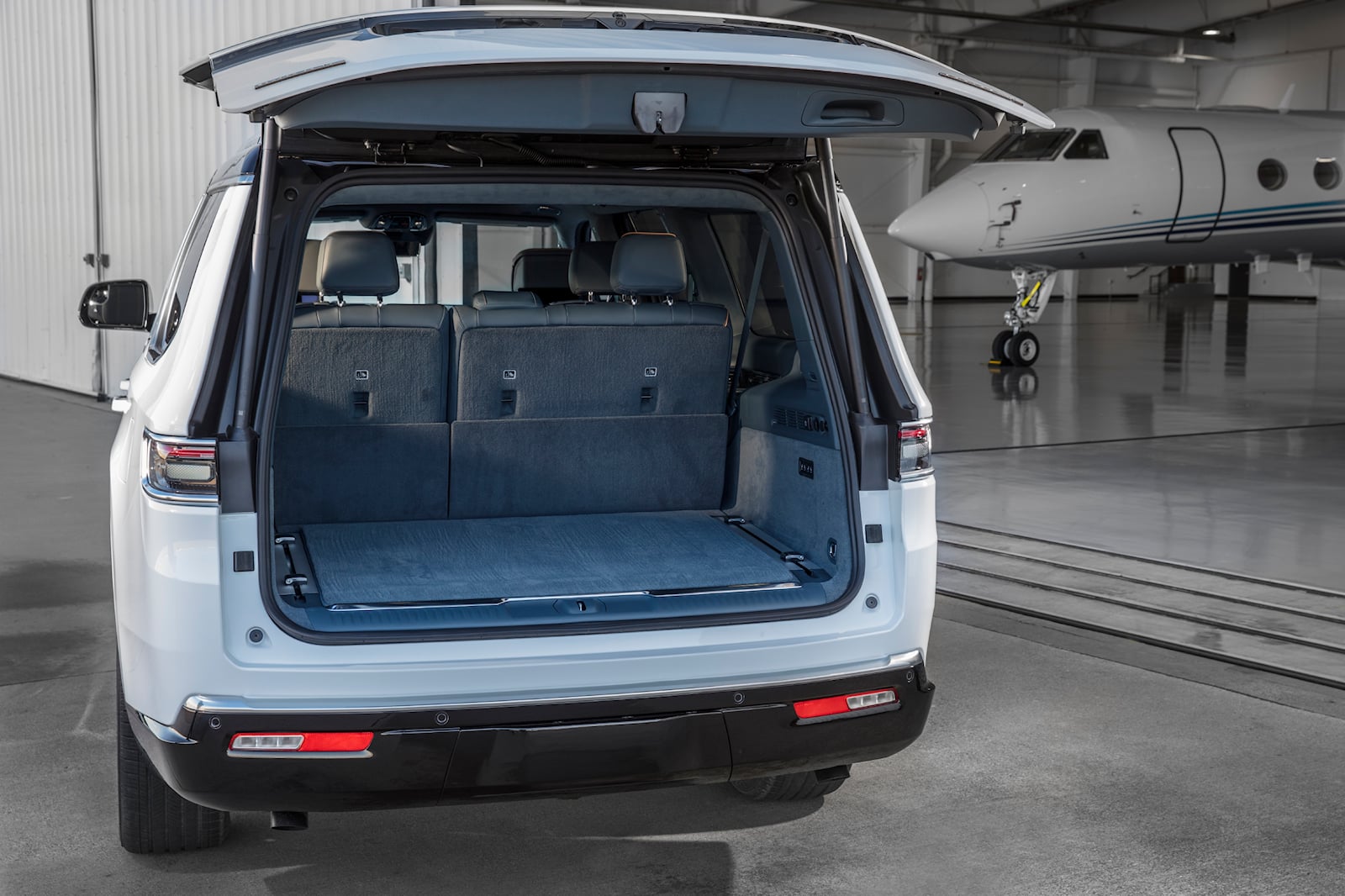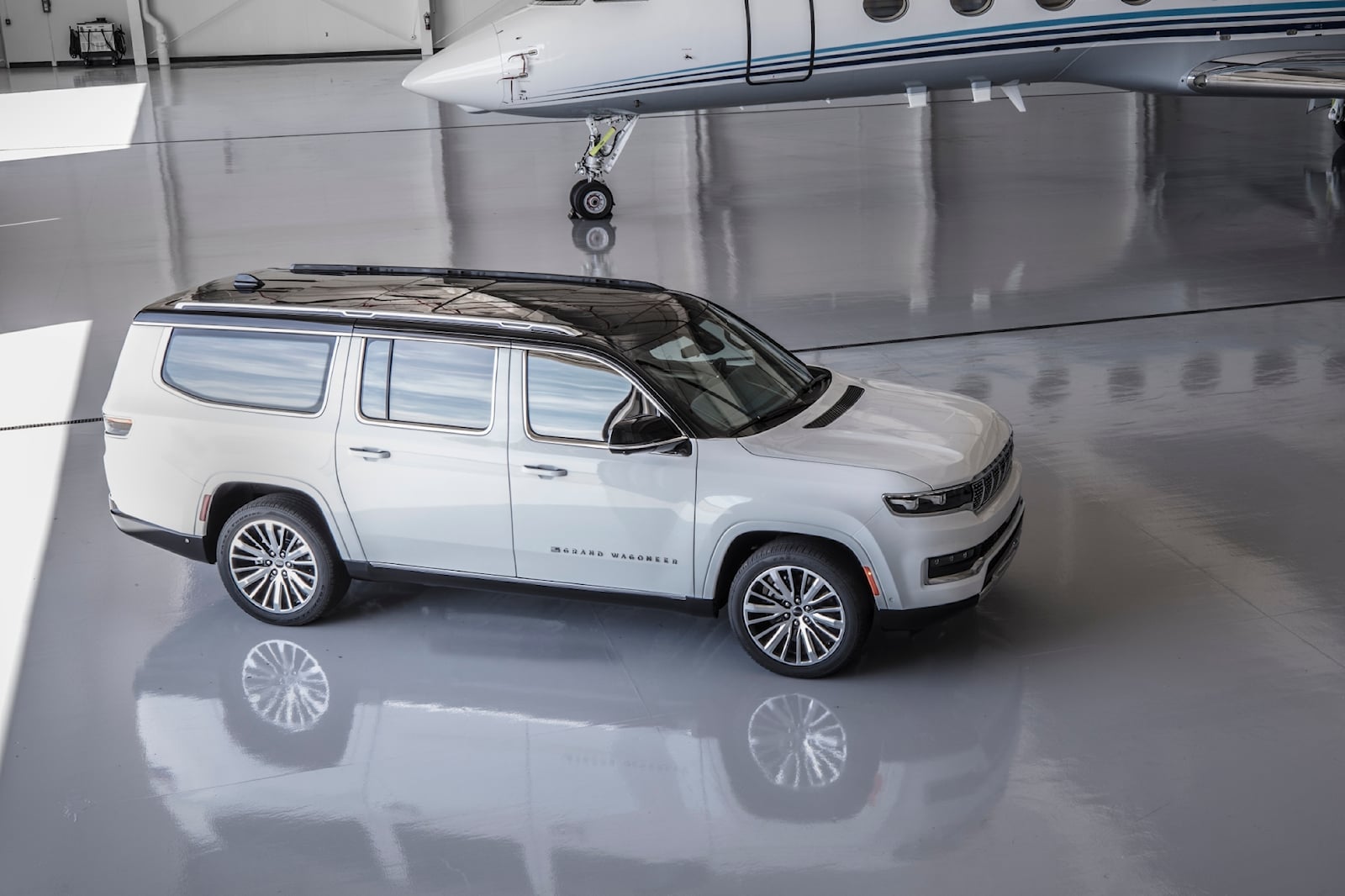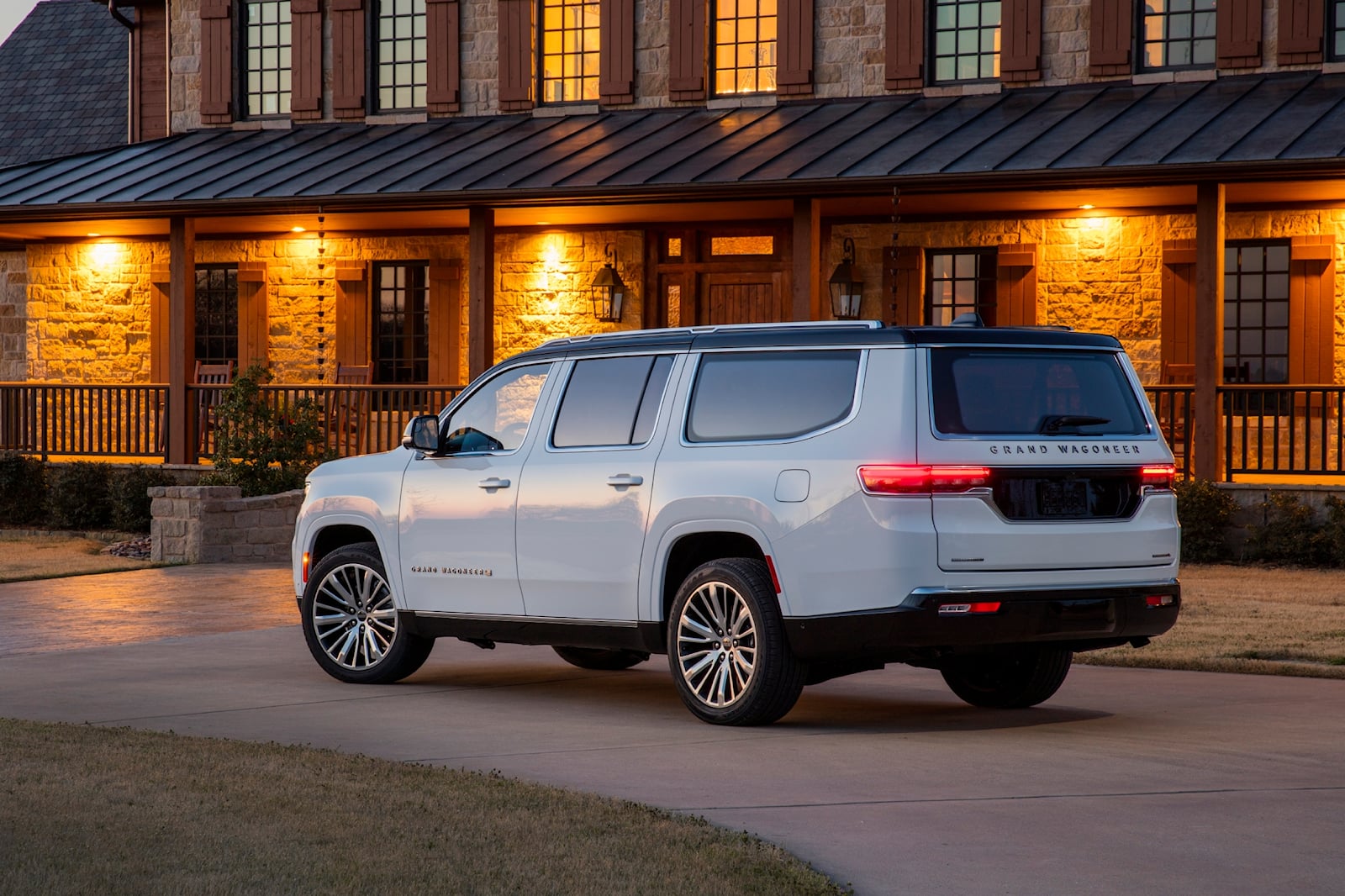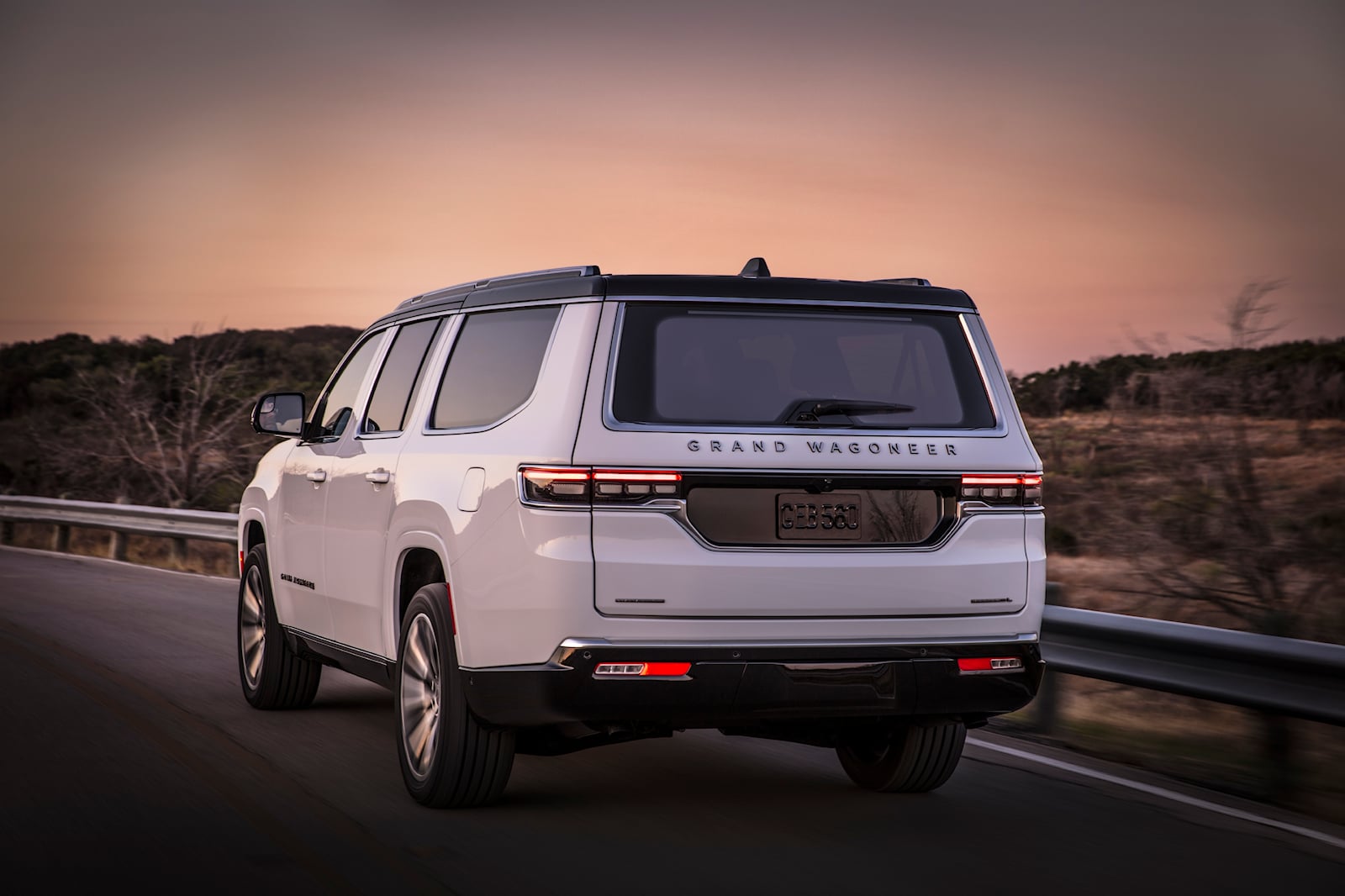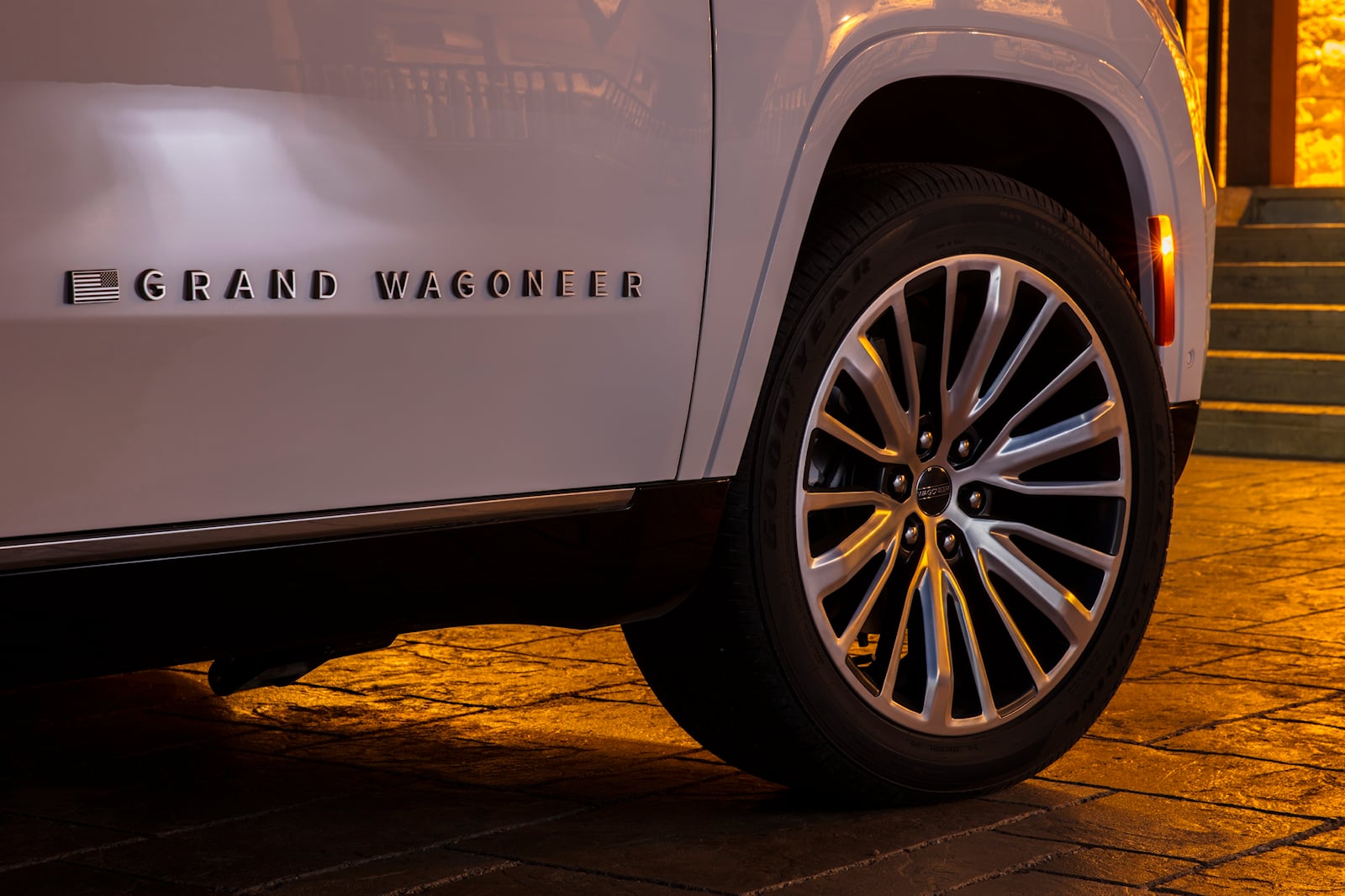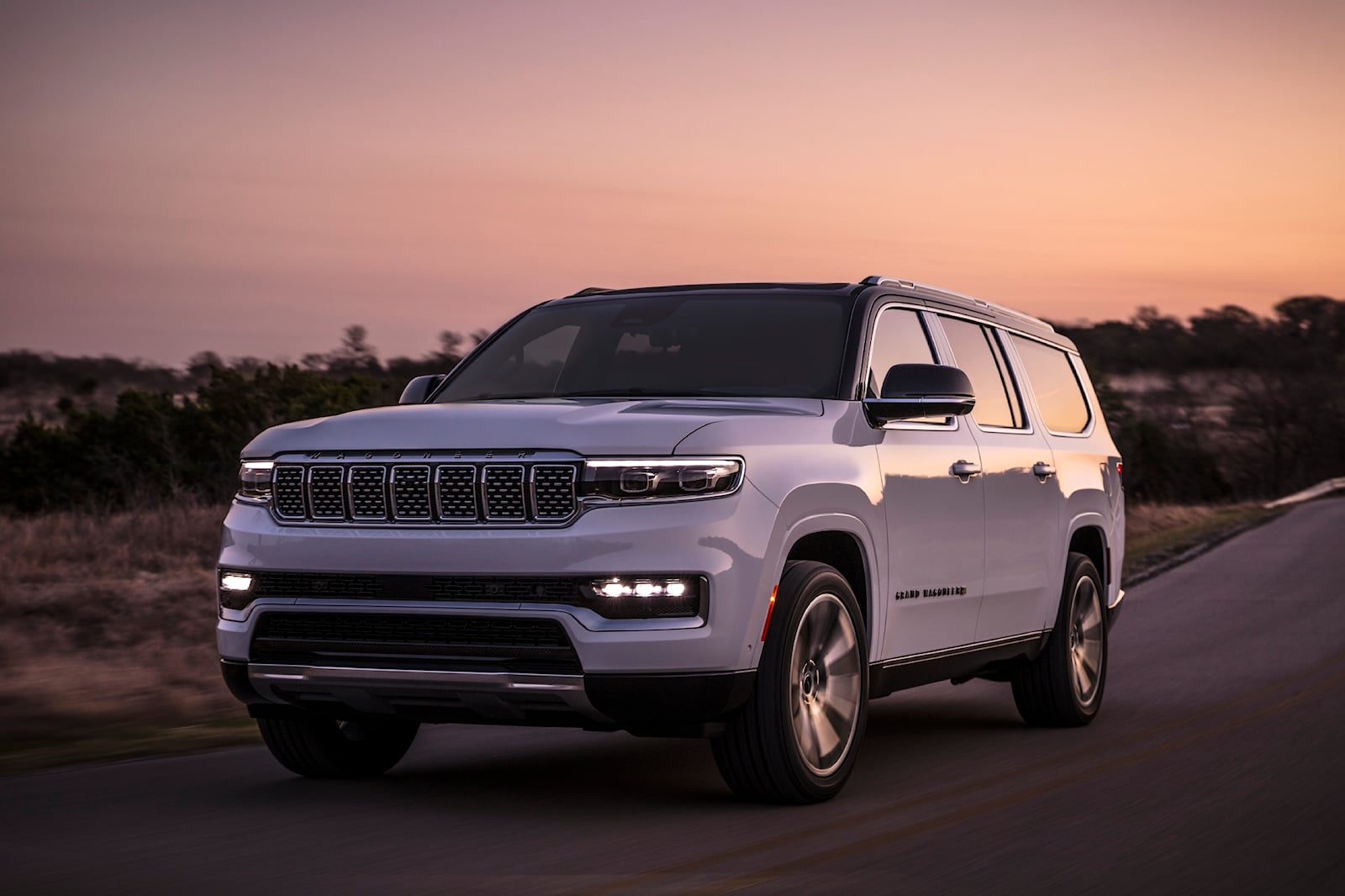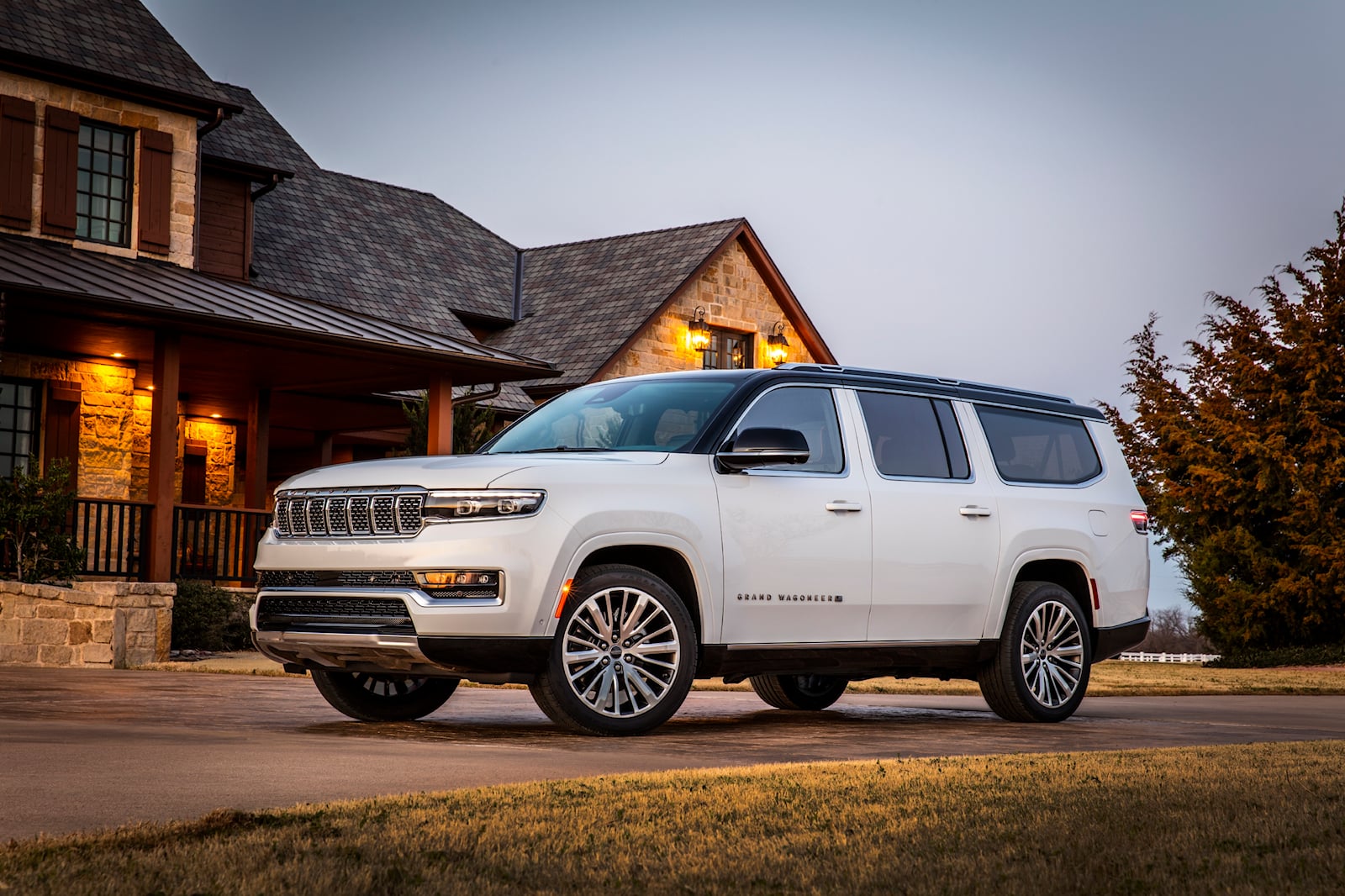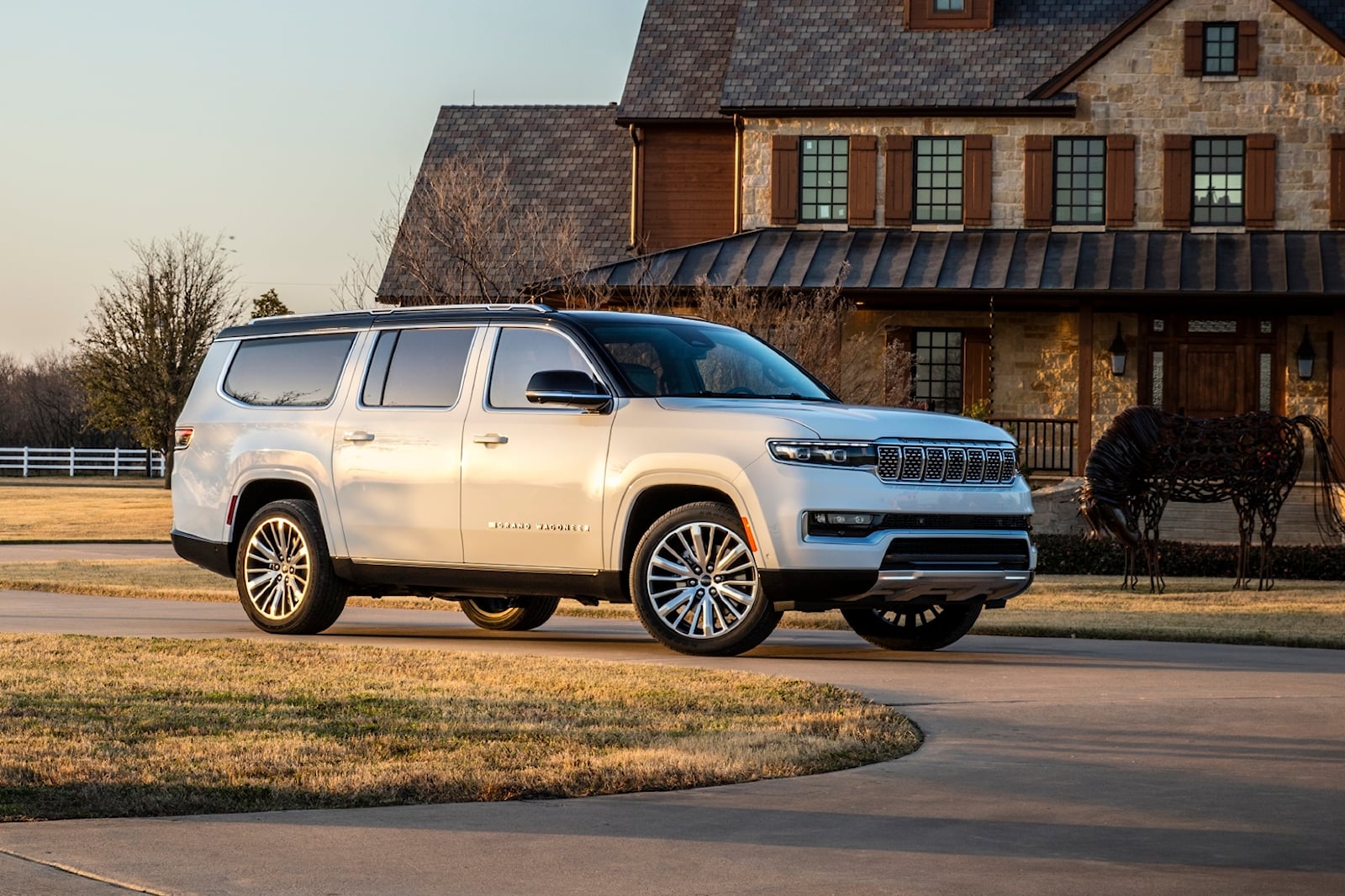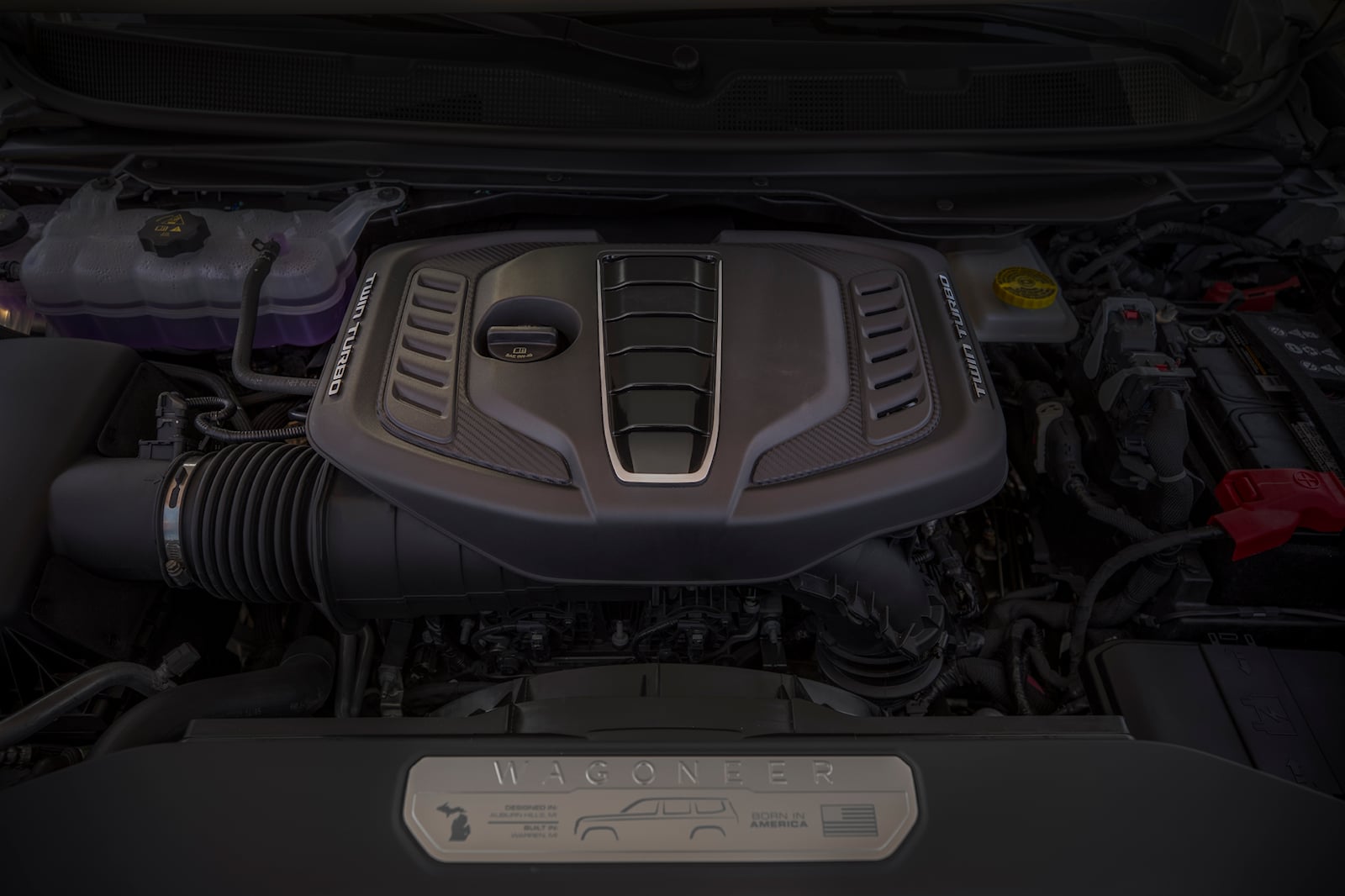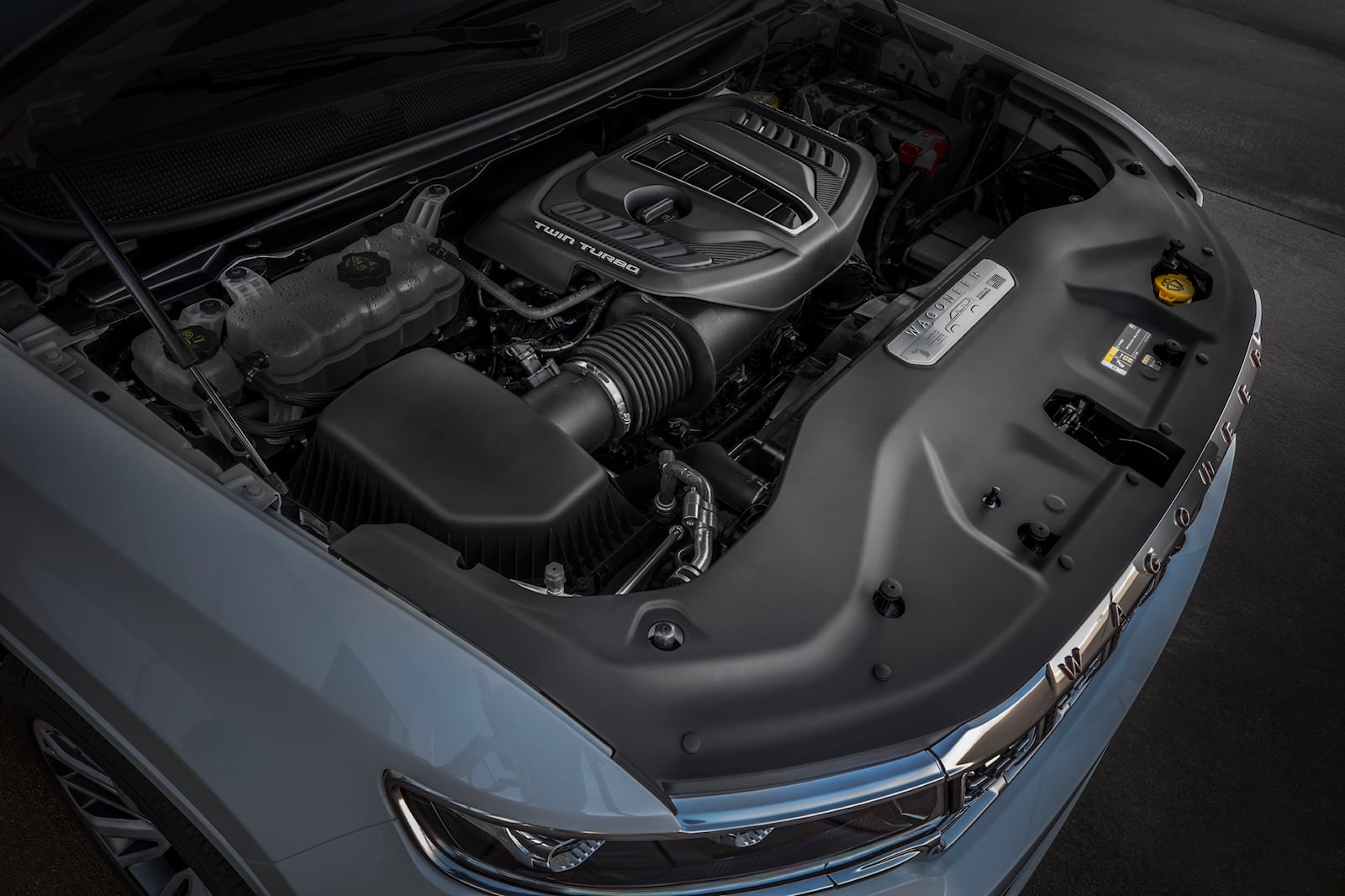Last year, Jeep reintroduced the Wagoneer into its lineup above the Jeep Cherokee and the Grand Wagoneer as its new headline act. The Wagoneer hit the market as a premium model, while the Grand Wagoneer fires shots into the luxury market. This year, Jeep is introducing the long-wheelbase variants, the Wagoneer L and Grand Wagoneer L. In reality, the Grand Wagoneer L is the top half of the Wagoneer trim levels. The key mechanical differences between the two models are the two engine sizes and that the Grand Wagoneer comes standard with an adjustable air suspension setup as stock. They are available with just rear-wheel drive or all-wheel drive with varying levels of added complexity and corresponding ability.
The engines used are two variants of Jeep’s 3.0-liter twin-turbo straight-six called Hurricane. In the Wagoneer L, it makes an impressive 420 horsepower, while the Grand Wagoneer L’s version makes an even more impressive 510 hp. When Jeep flew us out to Montana, our expectation was for the models to squarely place themselves in between the long-wheelbase versions of the brutish-yet-luxurious Cadillac Escalade and the ultra-refined Land Rover Range Rover.
2023 Jeep Grand Wagoneer L Models
See trim levels and configurations:
| TRIM | ENGINE | TRANSMISSION | DRIVETRAIN | PRICE (MSRP) |
|---|---|---|---|---|
| Series I | 3.0L Twin-Turbo Inline-6 Gas | 8-Speed Automatic | Four-Wheel Drive | $91,495 |
| Series II | 3.0L Twin-Turbo Inline-6 Gas | 8-Speed Automatic | Four-Wheel Drive | $98,090 |
| Series II Obsidian | 3.0L Twin-Turbo Inline-6 Gas | 8-Speed Automatic | Four-Wheel Drive | $98,090 |
| Series III Obsidian | 3.0L Twin-Turbo Inline-6 Gas | 8-Speed Automatic | Four-Wheel Drive | $110,995 |
| Series III | 3.0L Twin-Turbo Inline-6 Gas | 8-Speed Automatic | Four-Wheel Drive | $110,995 |
Jeep’s Take On American Style
The long-wheelbase Wagoneers follow Jeep’s attempt at timeless styling with homages to the beloved classic models. The L demarcation adds 12 inches in overall length (226.7 inches total) and seven inches of wheelbase (130.0 inches total), which Jeep claims opens the interior to be best in class for passenger space. Whether you like the styling, which we consider fussy at points, or not, it does tread into territory that can be described as stately. The callbacks to the original Wagoneer are definitely there, particularly in the roofline and pillar designs. However, the original Wagoneers certainly did not use acoustically laminated glass.
While both models feature LED lighting as standard, the quick way of spotting the difference is the fender flares and power deployable running boards as standard on the Grand Wagoneer. Of all the features, and there are plenty on both, we particularly loved the deployable running boards making entry and exit ridiculously easy, and they deploy and retract quickly. Conversely, the tailgate confused us as anyone over six feet will be brushing their head on it and getting bumped when the air suspension is lowered. There is an adjustment, but we couldn’t lift the gate any higher.
Spacious Interior
Jeep isn’t kidding about interior space. Even the third row, which is usually a penalty box for being the last born in a family, has good legroom. As a reference, the 36.6 inches of space is as much as some compact crossovers have in the second row. The center row is somewhere people are going to be happy spending time in on long journeys, and even our six-foot-one frame was happy to relax and could easily have taken a long nap back there. In both versions, the seating is all leather-trimmed and helps exude an old-school ambiance to mix with the modern technology available. Materials throughout feel good, although the soft-touch black plastic extending from the dash to the windscreen on the Wagoneer L isn’t the prettiest.
The Grand Wagoneer makes use of Satin American Walnut on the dash with metal “Grand Wagoneer” script inlaid on the passenger side. The wood is lovely, but the script strikes us as gaudy, although it will appeal to people that want to be reminded they spent big money on a vehicle. We would prefer that as an option. Fussiness aside, both takes on the long-wheelbase Wagoneer live up to the hype in terms of comfort, space, and cargo room.
On And Off The Road
While both Wagoneer L models are body-on-frame vehicles and show common traits, like the lack of on-center steering feel and how the suspension reacts at times to bumps, they feel lighter than they should. The most lightweight two-wheel-drive model weighs 6,069 pounds, and the heaviest Grand Wagoneer L Series III trim weighs 6,704 pounds. Even under braking, with the adjustable air suspension fitted to our testers, the weight is well hidden. That is until you realize there’s a sport mode, and the brakes quickly start to heat up and complain about the heat when pushed. The Wagoneer L models aren’t designed to be pushed like that, although they are surprisingly agile on tighter roads that should have vehicles of that size slowing down to maintain comfort for passengers.
The overall ride is lovely, and we would like to spend some time in a non-air suspension Wagoneer L to see if it translates. It should, as the longer wheelbase and wider track, no doubt, positively impact ride quality. The L models can eat up the miles in comfort, whether that’s on the freeway, regular highways, or dirt tracks.
The adaptive electric power steering feels surprisingly natural. It’s even more surprisingly communicative about what’s going on under the wheels, to the point of being positively chatty about keeping you informed. We did find some clunks and vibrations on regular roads, but they can likely be attributed to the vehicles we drove being pre-production models. That’s something we’ll pay close attention to when we get to test drive the L models over a week, as we know just how much attention engineers have paid to keeping things damped, smooth, and quiet.
We didn’t get to spend much time off-road or challenge the Selec-Terrain all-wheel drive and Quadra-Lift air suspension systems properly. Again, that’s something we’ll examine on local trails when we do a full test drive. In the meantime, on dirt tracks and while scrabbling up hills for photo opportunities, the Grand Wagoneer L didn’t even bat an eyelid in Sand and Mud mode.
Hurricane Powertrains
The switch to a twin-turbocharged straight-six rather than the V8 power of the standard Wagoneer is sure to grate on some people, but those people should, rightfully, be ignored. Jeep has a strong history with six-cylinder engines, and a straight-six is the right choice for fuel consumption and smoothness on and off-road. The twin turbochargers are responsive, and there’s no perception of lag whatsoever. Takeoff is smooth, helped by the TorqueFlite eight-speed automatic transmission, and plentiful power; more than most V8s in competitor models, Jeep is quick to point out. When we asked engineers about cooling, we learned that we just missed them at the height of summer in our local California dunes, testing the engines in the crazy heat.
The Wagoneer L uses the standard-output variant with 420 horsepower and 468 lb-ft of torque, and, frankly, that was plenty of power. It makes the Hurricane twin-turbo 510 with its 510 horsepower and 500 lb-ft of torque feel like overkill. Glorious overkill, but overkill nonetheless.
While we aren’t averse to overkill regarding power, we would like to see the 420-hp version available on the Grand Wagoneer L for emissions and fuel economy. A large part of the reason Jeep switched to these power plants is to improve fuel economy over the existing V8. Jeep claims a 1-2 mpg improvement there, which will likely depend mostly on weight more than the power available. The 420 engine runs on 89-octane mid-grade fuel as a preference but will accept 87-octane regular fuel. The Hurricane 510 requires premium fuel, which will mount up the running cost quickly, even if the EPA’s coming MPG estimates are identical for both versions.
Technology Overload
Jeep is not famous for its electronic-based technology, but the Wagoneer Ls are steeped in the stuff. It’s all based around the excellent Uconnect hub that serves everyone in the car and includes eight USB ports or 11 when equipped with Rear Seat Video screens. The Wagoneer L and Grand Wagoneer L use a 10.1- and 12-inch touchscreen display, respectively, and alongside an available 10.25-inch passenger screen. Add in gauge displays and rear screens via a package, and you can have up to 75 inches of total screen area. Wireless Apple CarPlay and Android Auto are standard, as is Alexa, with the ability to work from your home to the car or vice-versa.
The feature list is extensive and also includes a 4G LTE Wi-Fi hotspot to connect up to eight wireless devices, TomTom navigation, SiriusXM radio, and an Alpine premium audio system for the Wagoneer L and Grand Wagoneer. A 19-speaker McIntosh system is available for the Grand Wagoneer Series II, and the Series III comes with the Ultimate McIntosh system. The Alpine brand system is fine, heavy on booming bass, and a little shrill in the treble for a premium system, but sounds better than the common Bose systems.
McIntosh Audio
If you’ve ever been aware of high-end audio, you’ve likely heard of the American McIntosh brand or recognize its iconic blue-lit VU displays. Jeep worked closely with the brand to build its 19-speaker, 950-watt MX950, and 23-speaker, 1,375-watt MX1375 audio systems into the SUV. Our Grand Wagoneer L came with the MX950 system, so we fired up some lossless music to soak it up properly. As a high-end system, it’s up there, but we got the impression it’s tuned to emphasize bass and treble at the expense of the mid-tones (imagine a U shape on a graphic equalizer), which was a little disappointing. That’s an approach that sounds good initially but can become fatiguing to listen to over time. To pull it off perfectly, the bass has to be tight, and the treble rolled to be just the left side of bright. Unfortunately, the bass is on the loose side to our ears.
Don’t get us wrong; it’s a premium system that rocks and is now in our top five favorite systems. No music lover will regret going for the McIntosh systems as they’re full and detailed, and the sub digs deep. Where it excels is in its consistency throughout the vehicle, which is no mean feat in-car audio. In that respect, it’s one of the best applications we’ve come across without getting into Rolls-Royce money.

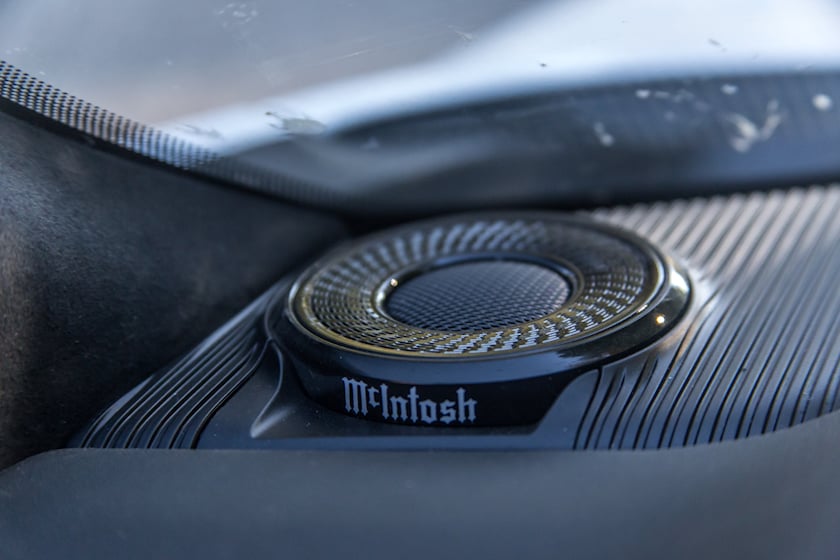
Verdict: The Full Package
Pushing into the luxury big SUV market is a big swing for Jeep, and we walked away impressed after a day split between the Wagoneer and Grand Wagoneer L. Our expectations of something that fits neatly between the luxury brawler that is the Escalade and the super-refined Range Rover were met.
With a starting price of $58,995 for the Wagoneer L and $88,640 for the Grand Wagoneer L, it outpaces the long-wheelbase competition and should out off-road the Escalade with either the Quadra-Trac I, Quadra-Trac II and Quadra-Drive II all-wheel-drive systems. To get to the Range Rover, you’re looking at another $30,000 or so, and we doubt many people will be cross-shopping there. Instead, and from our impressions taken in over a day, the Wagoneer and Grand Wagoneer L models sit in their own space as exceptional family luxury SUVs with American flavor baked in.


